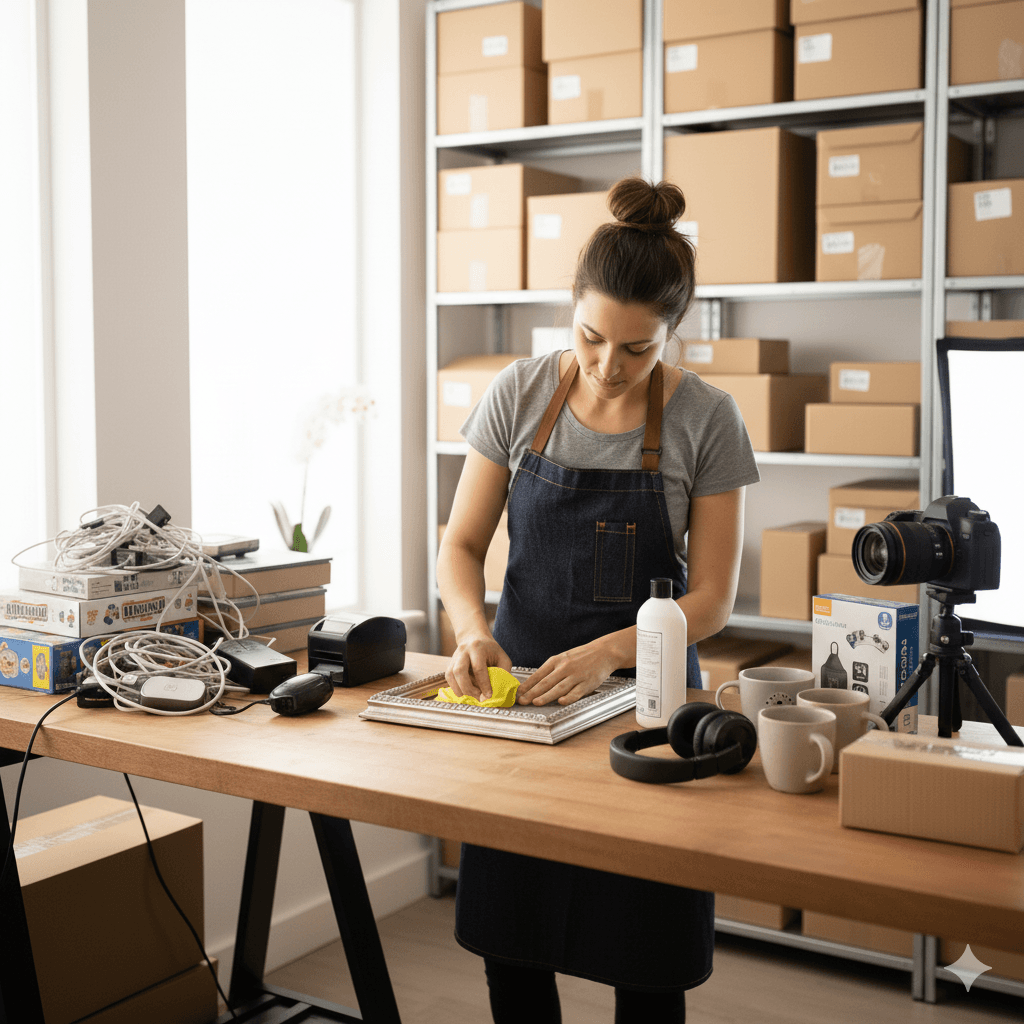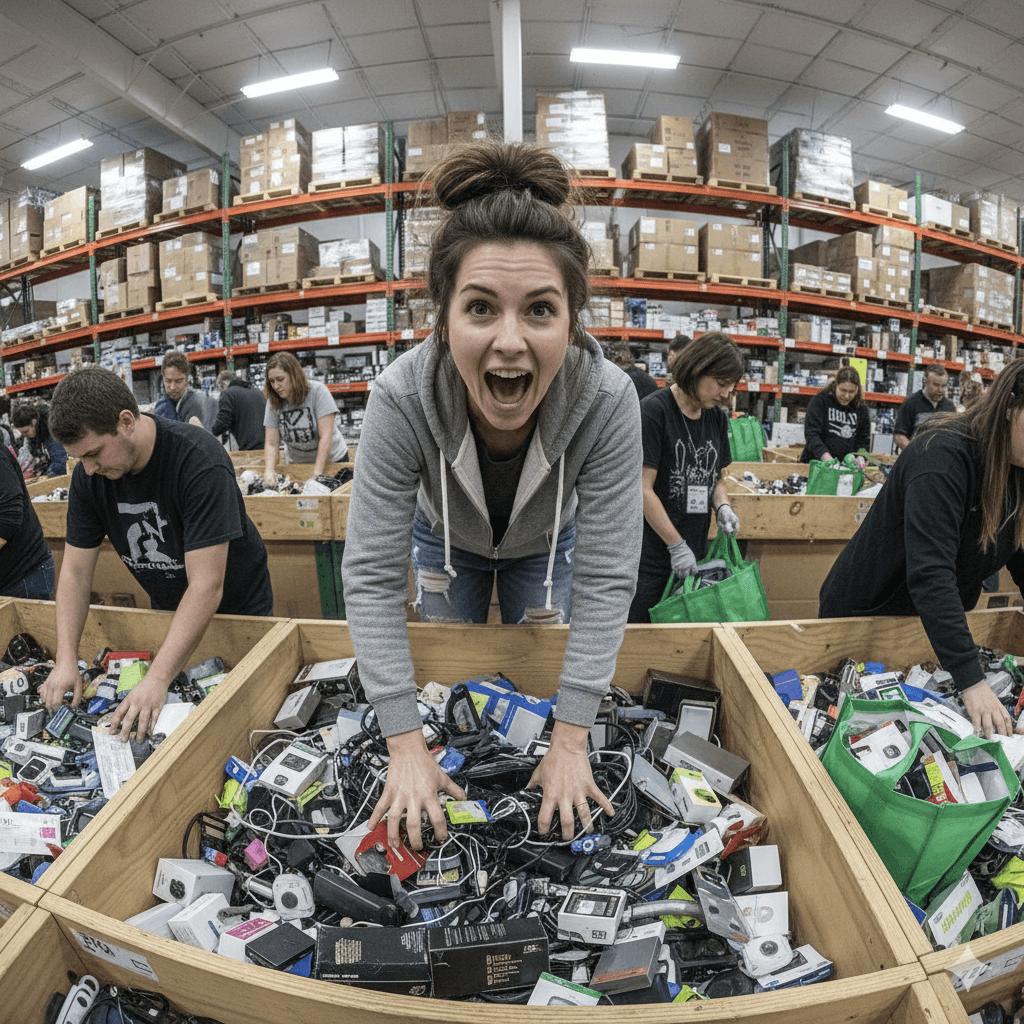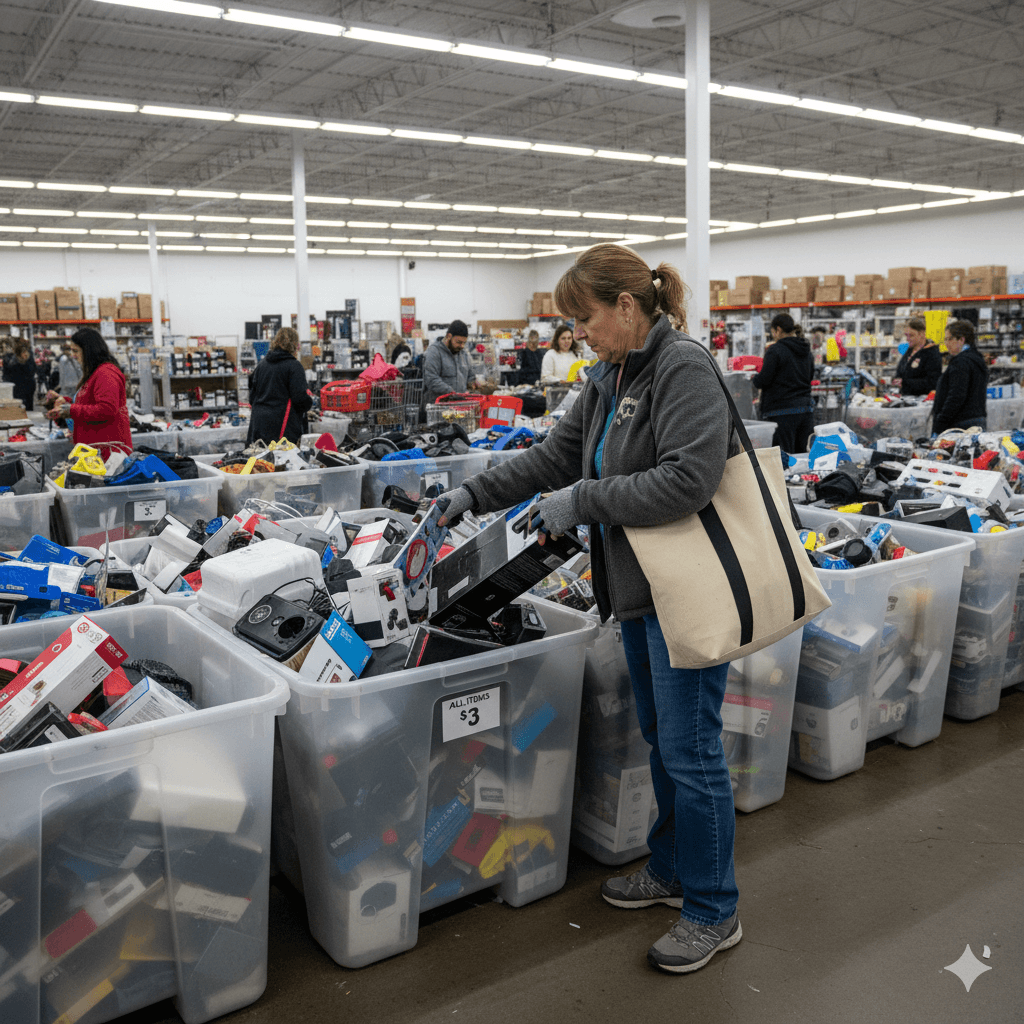Intro
The holy grail of liquidation store shopping isn't finding a new, sealed item—it's finding a broken or incomplete high-value item, buying it for pennies, and restoring it to full working order.
The difference between a $5 piece of junk and a $100 profit item often comes down to the simple application of elbow grease, basic tools, and a little knowledge. Most casual shoppers and resellers ignore items labeled as "salvage" or "customer return" with minor flaws, assuming they are worthless. This is where your true competitive edge lies.
By learning simple cleaning, testing, and repair techniques, you transition from being a simple retail arbitrage flipper to a value-added merchant. This ability to repair and refurbish allows you to source profitable items that *no one else* wants, dramatically reducing competition and dramatically increasing your average profit margin.
Here is the essential toolkit and guide to advanced refurbishment for the serious liquidation reseller.
I. The Essential Refurbishment Toolkit (Beyond the Basics)
You don't need a massive workshop, but you do need specialized tools to diagnose and fix the common issues found in liquidation inventory.
A. Diagnostics and Testing
- Digital Multimeter: Absolutely necessary for testing batteries, checking continuity in cables, and diagnosing simple electrical faults in appliances and electronics.
- Universal Power Supply/Adapter: An adjustable voltage universal adapter allows you to quickly test electronics (like routers, monitors, or small gadgets) when the original power brick is missing.
- Laptop/Monitor Testing Kit: A simple HDMI or USB-C cable, or even a cheap portable monitor, is crucial for testing the video output and functionality of devices like mini PCs or gaming consoles.
- High-Quality Specialized Driver Kits: Many modern electronics (phones, gaming controllers) use proprietary screws (Pentalobe, Tri-wing, etc.). A specialized electronics repair toolkit is non-negotiable for disassembly.
B. Cleaning and Aesthetics
- Magic Erasers (Bulk): For removing scuffs, sticky residue, and surface grime from plastic housing without damaging the finish.
- Goo Gone / Label Remover: Essential for removing price tags, bin labels, and packing tape residue.
- Compressed Air & Brushes: For cleaning dust, hair, and lint from ports, vents, and keyboards—a necessary step for virtually all returned electronics.
- Plastic Polish/Screen Cleaner: Simple polishes can remove light scratches from screens or plastic surfaces, instantly adding $10–$20 to the perceived value.
II. The Three Pillars of Liquidation Refurbishment
Refurbishment follows a three-step process that you must apply to every item: Cleaning, Diagnosing, and Completing.
Pillar 1: Deep Cleaning and Presentation (Adding Perceived Value)
Before you fix anything, make it look new. Most returns are due to buyer's remorse, not failure, but they are often dirty or improperly packaged.
- Remove All Stickers: Use heat (a low-setting hairdryer) to gently peel off old retailer stickers before treating the residue with Goo Gone.
- The "Lint-Free" Rule: Ensure screens, lenses, and glass are completely lint- and streak-free. Use a microfiber cloth and dedicated screen cleaner.
- Restore the Box: If the original box is scuffed, use the Magic Eraser to remove marks. If the box is missing, invest in quality plain brown boxes and void-fill (packing peanuts, air pillows) to create a professional, "new" shipping experience. Presentation is half the sale.
Pillar 2: Diagnostics and Simple Repair (Turning Off to On)
Focus on the most common failures found in bin inventory, which are usually minor.
- The Battery Issue: Many returned electronics simply have a dead battery. Test the battery with your multimeter. If it’s below the minimum voltage, replace it or simply fully charge it and test again. This turns a "non-working" item into a "fully functional" one.
- The Cable Fix: The most frequently missing or broken item is the cable or power supply. If the device powers on with your universal adapter, you only need to source an affordable replacement cable to make it sellable.
- Loose Connections: For items like gaming controllers or small appliances, often a basic component (a loose wire, a faulty button) can be re-soldered or tightened inside the casing.
The Golden Rule: Never spend more than 30 minutes or $10 on a repair unless the potential profit is above $100. Your time is the most expensive resource.
Pillar 3: Completeness and Documentation (Maximizing Trust)
A complete item sells faster and for a higher price. Documentation is critical, especially when selling refurbished electronics.
- Source Missing Components: Search the internet for manuals or parts diagrams. Find affordable, generic replacements for missing items (e.g., measuring cups for a blender, the remote for a speaker system).
- Document Everything: When you list the item, be 100% transparent. Include a section like: "Refurbishment Details: Item tested, repaired a minor electrical connection, and cleaned. New, non-OEM power cable included. Guaranteed functional."
- Warranty/Returns Policy: Because you added value, you can command a slightly higher price. Stand by your work with a reasonable return policy (e.g., 30 days) to build massive buyer trust.
The Financial Advantage: The Salvage Price Point
The power of advanced refurbishment lies in the acquisition cost. When you can buy broken items for the lowest price—often the lowest price point of the bin drop (e.g., $0.25 to $1)—your percentage profit margin skyrockets.
A $1 item repaired and sold for $50 represents a higher return on investment than a $50 new item sold for $80. You have effectively created value where none existed before, insulating your business from intense market competition.
Ready to find your next project?
To begin this journey, you need access to the highest-volume liquidation stores where salvage items are plentiful and cheap. Start scouting locations and familiarizing yourself with inventory types by using the powerful search function on the https://www.findaliquidationstore.com/ homepage. The next time you find a broken appliance, remember: it’s not trash, it’s an investment opportunity.
Check out the map and store details using the search function on the https://www.findaliquidationstore.com/ homepage to locate the best sources for salvage inventory.



